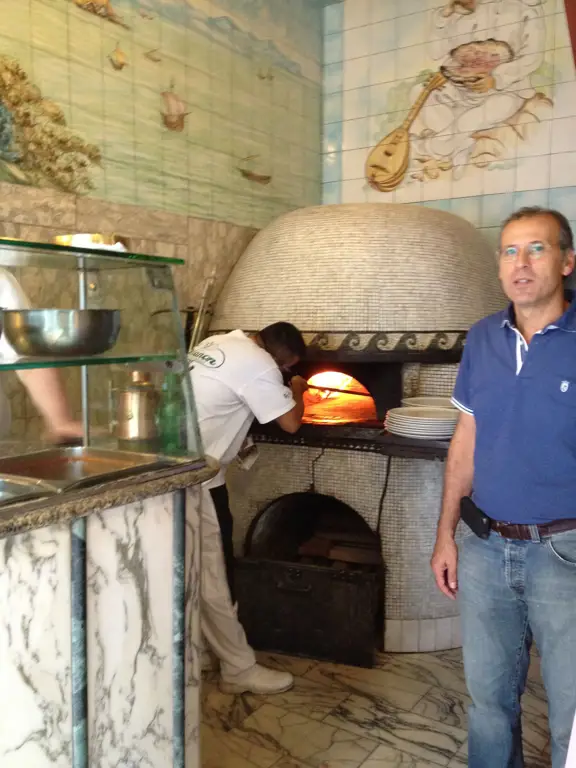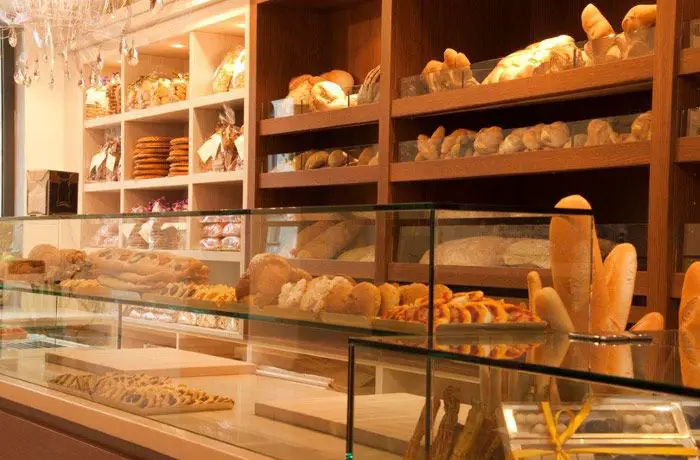Forno, a word that evokes images of warm, crusty bread and the comforting aroma of freshly baked goods, is a term that doesn't directly translate to a single word in English. Understanding what "forno" means in English requires understanding its context. In Italian, "forno" simply means "oven." However, the word carries a cultural weight that goes beyond its literal translation. This exploration will delve into the nuances of "forno" in English, encompassing its meaning in different contexts and the cultural significance it holds.
The most straightforward translation of "forno in English" is simply "oven." This is perfectly acceptable in most culinary contexts. If you're talking about baking bread in a "forno," you can safely use the word "oven." Recipes translated from Italian will often use "oven" as the equivalent of "forno." The simplicity of this translation makes it the most commonly used and readily understood version.
However, the word "forno" often implies more than just a kitchen appliance. It often suggests a specific type of oven, perhaps one fueled by wood or one used for traditional baking methods. It might evoke images of a rustic, wood-fired oven, possibly even an outdoor one. In this case, a more descriptive translation might be needed to accurately convey the meaning.
Consider the context of using "forno" to describe a pizza oven. While you could still use "oven," it might not capture the essence of a traditional wood-fired pizza forno. Here, you might use terms like "wood-fired oven," "pizza oven," or even "traditional oven" to better reflect the intended meaning. Adding descriptive words clarifies the type of oven being discussed, preventing any misunderstanding.
The use of "forno" can also be found in the context of a bakery. In this instance, "forno" isn't referring just to the oven but the entire establishment. Therefore, simply translating "forno" as "oven" in this context would be inadequate. Instead, using terms like "bakery" or "bread oven" or even "artisan bakery" would be more appropriate, depending on the specific nuances you wish to convey. The word "forno" in Italian carries with it a certain charm and tradition which is lost in a simple translation of "oven."

Beyond the literal meaning, "forno" represents a culinary tradition. It speaks to the history and artistry of baking, particularly in Italian culture. The warmth, the crackling fire, the aroma of baking bread – these are sensory experiences associated with a "forno" that are difficult to capture with a simple translation. This evocative quality is lost if you only use the word "oven."
Therefore, the best translation of "forno in English" depends entirely on the context. In straightforward recipes, "oven" will suffice. However, when discussing traditional baking methods, artisanal bread making, or specific types of ovens, using more descriptive terms such as "wood-fired oven," "pizza oven," "bakery," or even "artisan bakery" will provide a richer and more accurate portrayal of the intended meaning. The choice lies in conveying not just the literal meaning, but also the cultural and sensory experiences associated with the word "forno."
To further illustrate the contextual nature of translation, let's consider a few examples. If a recipe instructs you to preheat your "forno" to 350 degrees, then "oven" is perfectly suitable. However, if someone describes a trip to a quaint Italian village and mentions seeing a traditional "forno" used for baking bread, the word "oven" feels inadequate and lacks the evocative power of the original word. Using terms like "wood-fired oven" or "traditional brick oven" will better convey the scene.
The cultural significance of the word "forno" highlights the challenges of direct translation. Words often carry connotations and cultural baggage that are difficult to replicate in another language. While "oven" is the closest literal equivalent, it fails to capture the richness and warmth associated with the Italian word. Therefore, skilled translators often choose words that not only accurately convey the meaning but also capture the essence and spirit of the original word.
Consider the visual imagery associated with a "forno." It's not just a metal box; it's often a structure of brick or stone, perhaps even ancient, radiating heat and the smell of baking bread. The word "forno" evokes this visual narrative, suggesting a slow, deliberate baking process that is distinct from modern electric ovens. This nuance requires a more descriptive phrase in English to convey the same feeling and imagery.
In conclusion, while "oven" is the most common and acceptable translation for "forno" in English, it’s crucial to consider the context. The best translation will accurately reflect not only the literal meaning but also the cultural significance and sensory experiences associated with the word. Sometimes a simple word won’t suffice; using descriptive phrases and evocative language will give a truer picture of the original word's essence. This nuanced approach to translation helps ensure clarity and avoids losing the richness and depth of meaning found in the original language.
The difference between using simply “oven” and “wood fired oven” is significant. While both are technically accurate, the added descriptors paint a more vibrant picture and convey a sense of authenticity. This is particularly relevant when discussing traditional Italian cooking, where the type of oven used plays an essential role in achieving the desired result.
Furthermore, consider the implications when describing a visit to a bakery. Saying you visited a place with a “forno” versus saying you visited a “bakery” evokes different feelings. “Forno” suggests a more intimate, possibly family-run establishment with a focus on traditional methods, whereas “bakery” can encompass a much wider range of businesses. The choice of words can significantly affect the reader’s perception.

To further enhance the understanding of "forno in English," let's explore some related terms and their equivalents. If we’re discussing a pizza forno, then the most accurate translation would be "pizza oven." If the conversation centers on a bread forno, we could use "bread oven" or even "artisan bread oven." If the focus is on the structure itself, perhaps "oven structure" or "baking oven" might be more appropriate.
The flexibility in translation underscores the importance of choosing words that accurately reflect the context. It is about finding the right balance between precision and evocative language. While a simple word like “oven” can suffice in simple contexts, it lacks the rich tapestry of meaning embedded within the Italian word “forno.”
Let's consider a hypothetical scenario: Imagine you're writing a travel blog about your trip to Italy. You describe visiting a small village and encountering a traditional bakery with its own "forno." Using simply “oven” would not do justice to the experience. A more vivid description would be something like, “We stumbled upon a charming village bakery, its heart a rustic stone oven, emitting the enticing aroma of freshly baked bread.” This description paints a clearer picture and evokes a stronger emotional response.
In the realm of culinary arts, choosing the correct terminology is crucial. A culinary professional would never use just “oven” to describe a specialized appliance. They would specify the type of oven, its function, and perhaps even its manufacturer. This level of detail ensures clarity and precision, highlighting the importance of correct terminology in a professional setting.
In addition to the words already mentioned, other terms could be used depending on the context. Words like “kiln” or “hearth” might be relevant in certain situations, particularly when discussing ovens used for pottery or other crafts. The key is to choose the word or phrase that best reflects the specific meaning and context of the word “forno.”
Consider the following table illustrating different scenarios and their appropriate translations:
| Scenario | Italian (Forno) | English Translation |
|---|---|---|
| Baking bread at home | forno | oven |
| A traditional wood-fired pizza oven | forno a legna | wood-fired pizza oven |
| A bakery's oven | forno del panificio | bakery oven |
| An ancient oven | forno antico | ancient oven/historic oven |
| A portable oven | forno portatile | portable oven |
This table demonstrates the various ways “forno” can be translated, depending on the specific context. The more detailed the context, the more nuanced the translation should be. Remember, the goal is not just to translate the word but to convey its meaning, cultural significance, and the associated sensory experiences.

Therefore, the next time you encounter the word “forno,” remember that the most appropriate translation in English is not always a simple one-to-one substitution. The context is paramount. By considering the specific situation and employing descriptive language when necessary, you can effectively convey the meaning of “forno” while capturing its rich cultural and sensory nuances. Choosing the right words is critical to ensuring clear communication and preserving the essence of the original term.
In summary, while “oven” remains the most common and readily understood translation of “forno in English,” the optimal choice depends heavily on context. From simple culinary instructions to descriptive travel narratives, utilizing more specific and evocative language allows for a more accurate and engaging portrayal of the meaning and cultural significance of “forno.” The depth and breadth of meaning contained within the word “forno” requires a flexible and nuanced approach to translation, ensuring that the essence of the word remains intact in its English equivalent.
This detailed exploration of "forno in English" aims to provide a comprehensive understanding of its multifaceted meaning. By considering the specific context, you can select the most appropriate translation, ensuring accurate and vivid communication. Remember, the goal is not just to translate a word, but to convey its cultural significance and sensory experiences to the reader.




